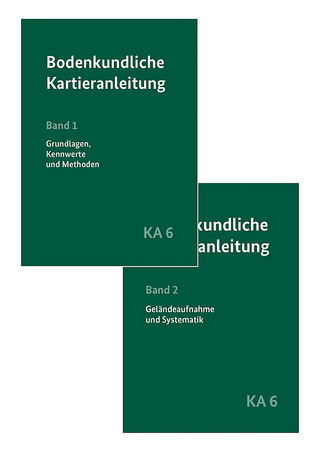
Interdisciplinary Environmental Solutions
Springer International Publishing (Verlag)
978-3-031-16762-1 (ISBN)
- Noch nicht erschienen - erscheint am 30.01.2025
- Versandkostenfrei innerhalb Deutschlands
- Auch auf Rechnung
- Verfügbarkeit in der Filiale vor Ort prüfen
- Artikel merken
This book will be an invaluable reference for advanced undergraduate, graduate students and researchers working in the field looking for an accessible overview of this interdisciplinary approach to the topic.
lt;b>Dr Barnali Dixon is currently Professor of Geospatial Technologies, in the Program of Environmental Science and Policy, at University of South Florida. She is also the founding director of the Geospatial Analytics lab (G-SAL) and the Executive Director of Initiative on VCoastalResilienbce and Adaptation (iCAR). Dr Dixon's research focuses on the development and application of spatially integrated decision support tools (SDST) using GIS, GPS and remote sensing tools for modeling and managing soil, landuse and land-water interfaces using approximation tools. She is particularly interested in model development that are transdisciplinary in nature.
Chapter 1: Introduction Interdisciplinary Environmental Solutions.- Chapter 2:Introduction Complexity of environmental systems.- Chapter 3: Illustration of System Complexity and Need for integrative analysis for effective solutions.- Chapter 4: Place, Space, Scale, Geospatial Analysis and GIS.- Chapter 5: Uncertainty Issues with Complex System.- Chapter 6: Role of Place (Space) in Decision Support Systems.- Chapter 7: Place-based approaches to Integrated Environment Solutions.- Chapter 8: Role of place and space in identification of environmental problems and finding solutions.- Chapter 9: Geographic Problem Solving: Summary of key environmental problems that need integrative approaches and the notion of uncertainty associated with 'ways of knowing'.- Chapter 10: GIS, GeoAI, and Geospatial Framework For Integrated Place-Based Approach.- Chapter 11:Conceptual Framework for Integration of Terrestrial Systems and Aquatic Sinks using Systems Thinking and Place-based Approach.- Chapter 12: Spato-temporal variability of water quality and watershed relationship.- Chapter 13: The Impact of Wildfire on Soil Erosion and Water Quality using a GIS-integrated Framework.- Chapter 14: Geospatially Integrated Drainage Basin Scale Sediment Dynamics Under Projected Future Climate Conditions In South East Georgia, USA.- Chapter 15: Linking Watershed's Properties to MPAs: Integration of Terrestrial Source, Landuse, and Watershed Hydrogeology in Coastal MPA Management.- Chapter 16: Modeling of Surface and Groundwater Contamination to Assess Human Health Risk: An Integrated Geospatial Approach.- Chapter 17: Application of a geospatially integrated species distribution model for seagrass in an urbanized estuary.- Chapter 18: Role of Place/Space in Conservation and Multi-scale Analysis.- Chapter 19: Analyzing Public Responses from Qualitative Data through Spatial Distribution Analysis Utilizing GIS for Effective Resilience Planning.- Chapter 20: Sensitivity Analysis and the use of Geospatial Framework: a Case Study of Soil Moisture and Soil Water Balance.- Chapter 21: Comparison of RUSLE and MUSLE models to predict and estimate soil erosion : a geospatially integrated sensitivity analysis.- Chapter 22: Comparison of Sensitivity analysis with ANN and SVM for Water Budget Calculations.
| Erscheinungsdatum | 27.07.2023 |
|---|---|
| Zusatzinfo | XLVII, 808 p. 508 illus. |
| Verlagsort | Cham |
| Sprache | englisch |
| Maße | 148 x 210 mm |
| Themenwelt | Naturwissenschaften ► Geowissenschaften ► Geografie / Kartografie |
| Schlagworte | Decision Support Systems • environmental case studies • Geospatial Technologies • GIS • interdisciplinary environmental solutions • natural resource management • scale and data • spatial modelling and GIS • sustainable environmental planning |
| ISBN-10 | 3-031-16762-7 / 3031167627 |
| ISBN-13 | 978-3-031-16762-1 / 9783031167621 |
| Zustand | Neuware |
| Haben Sie eine Frage zum Produkt? |
aus dem Bereich


